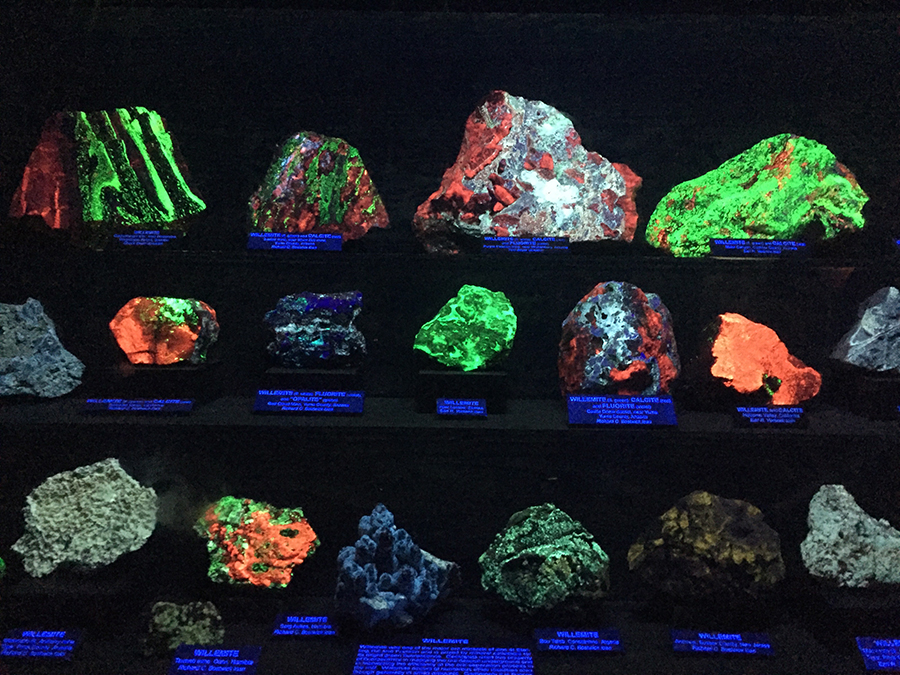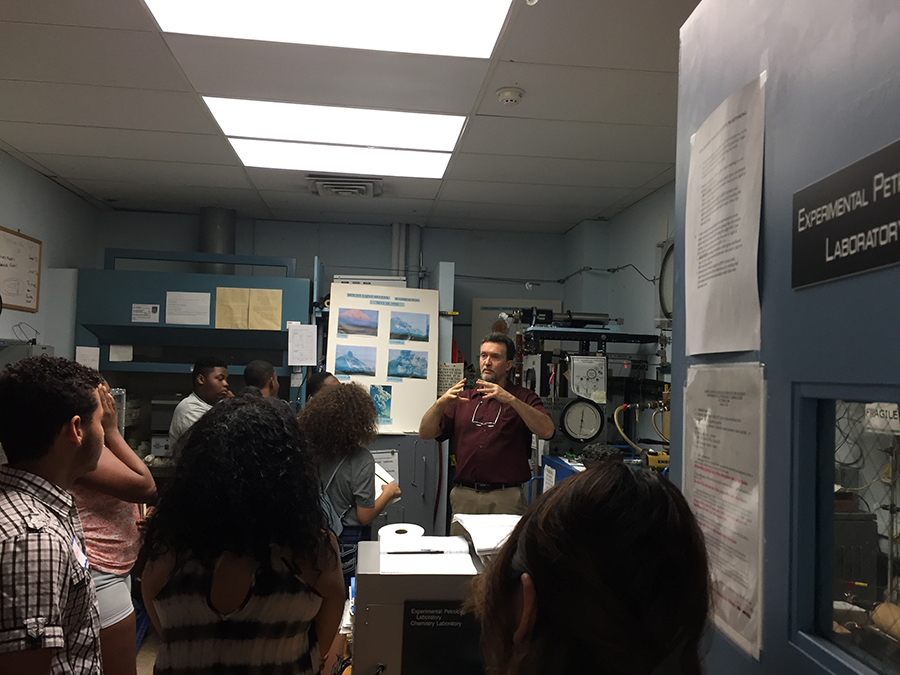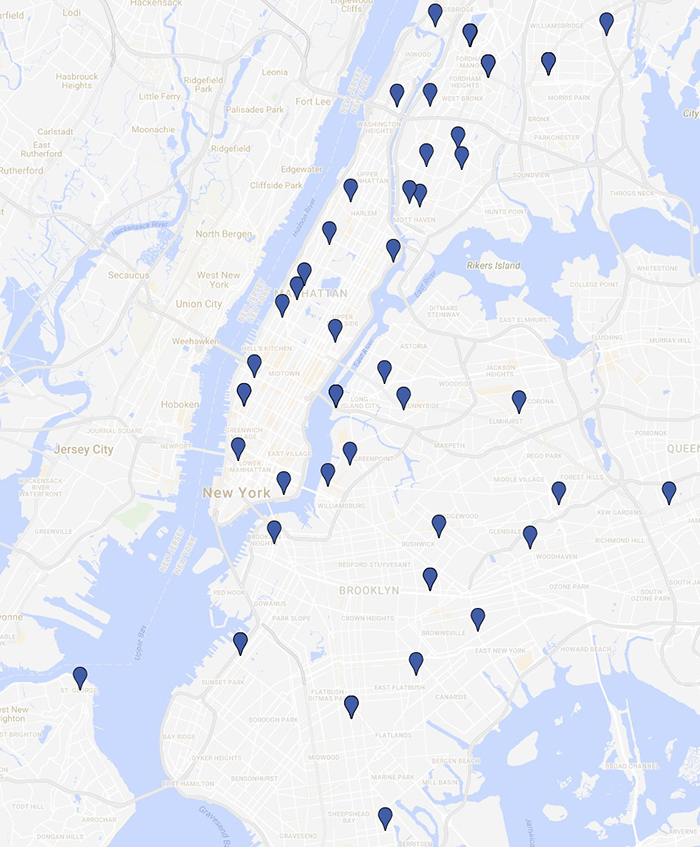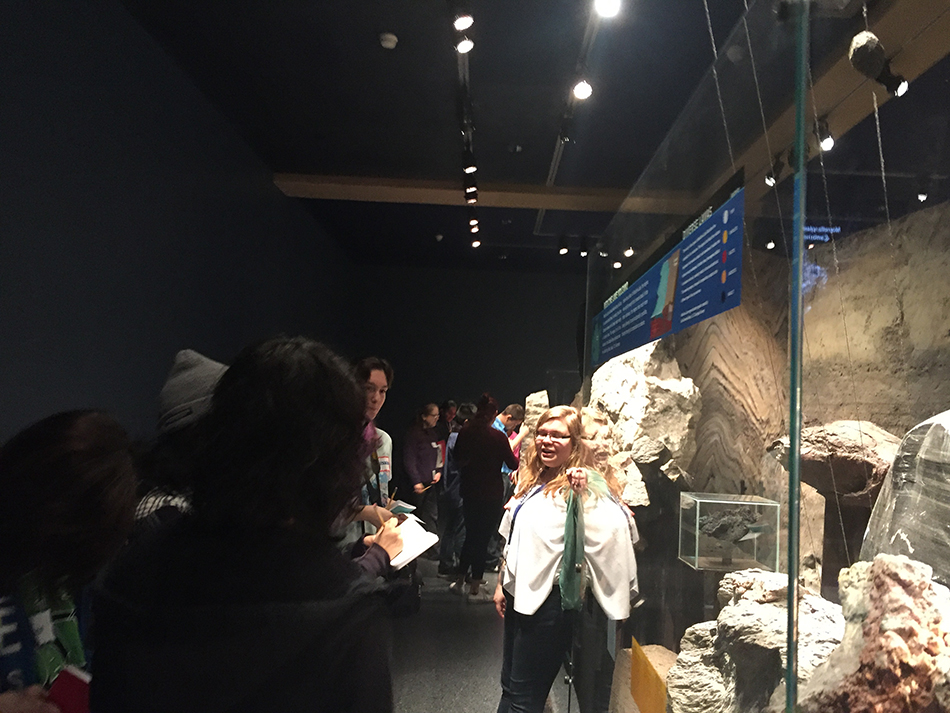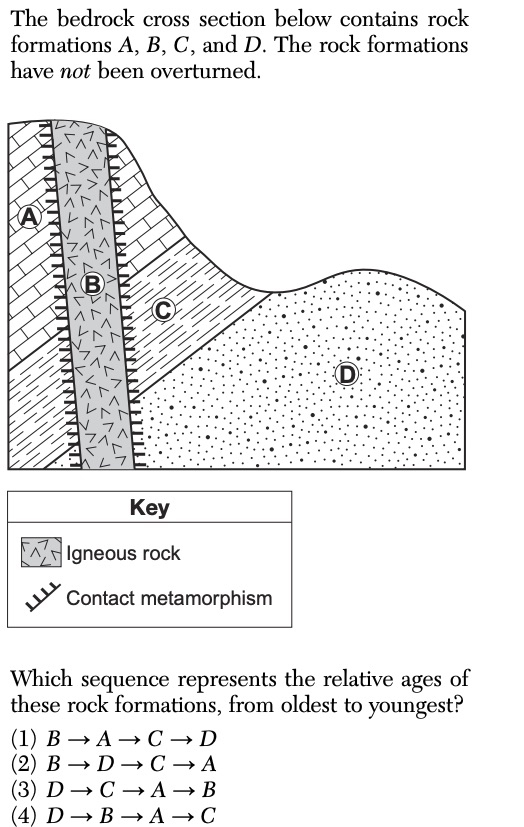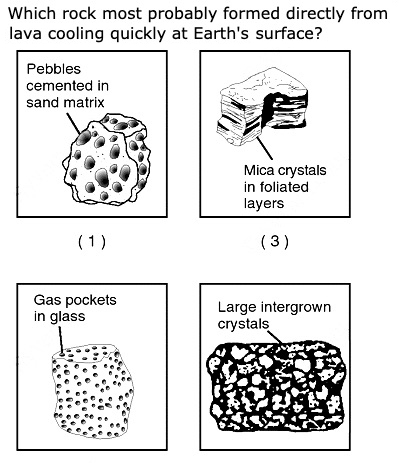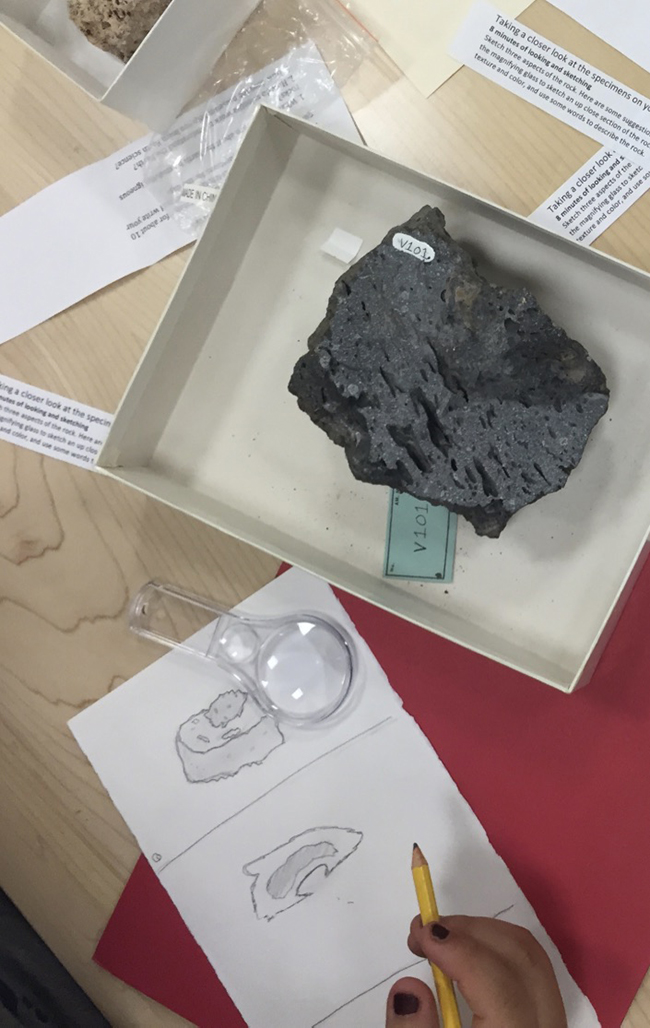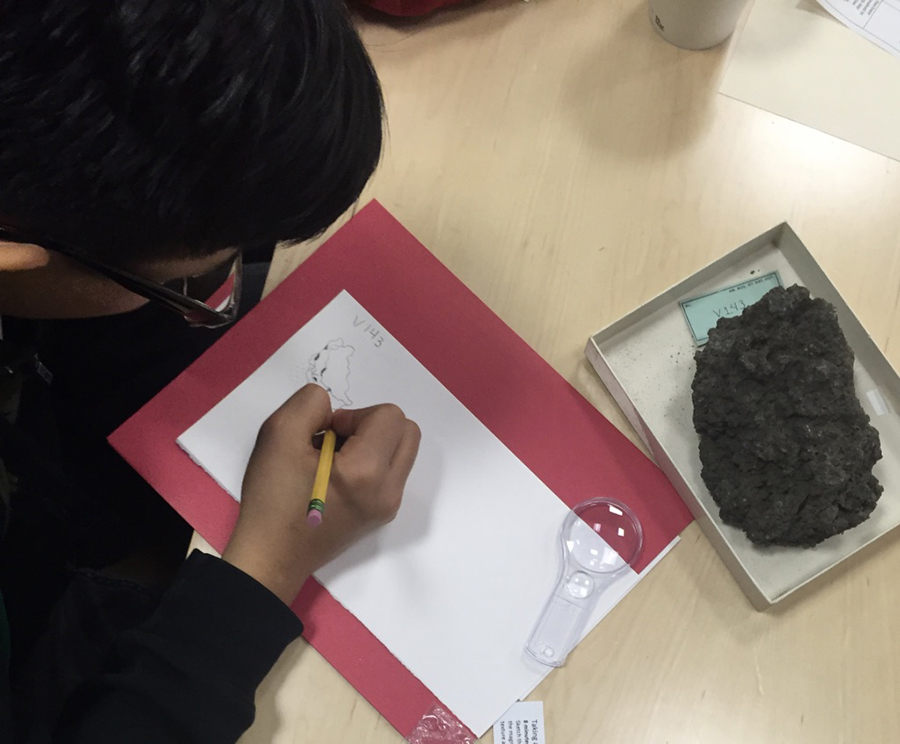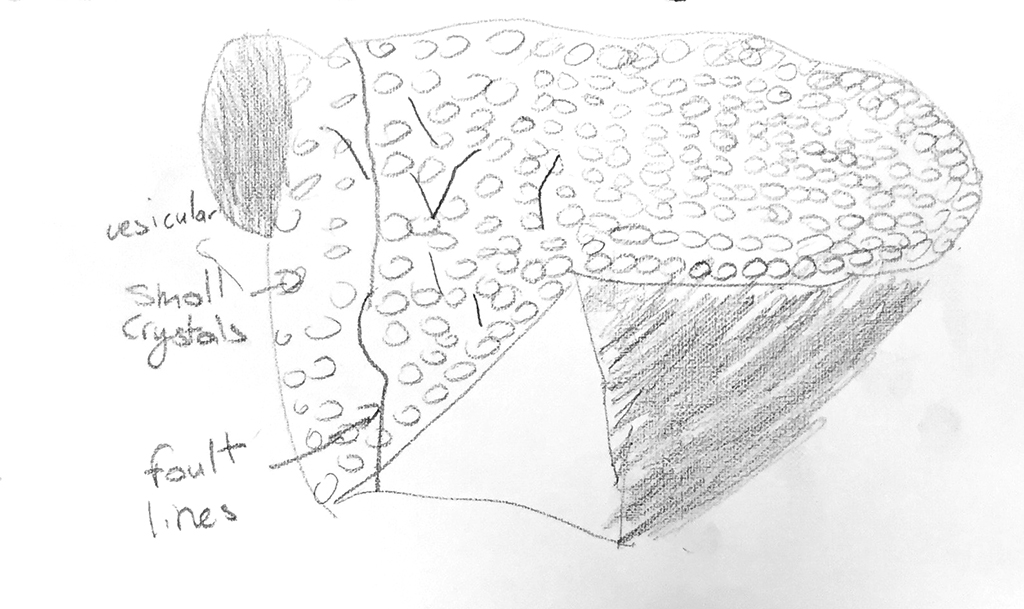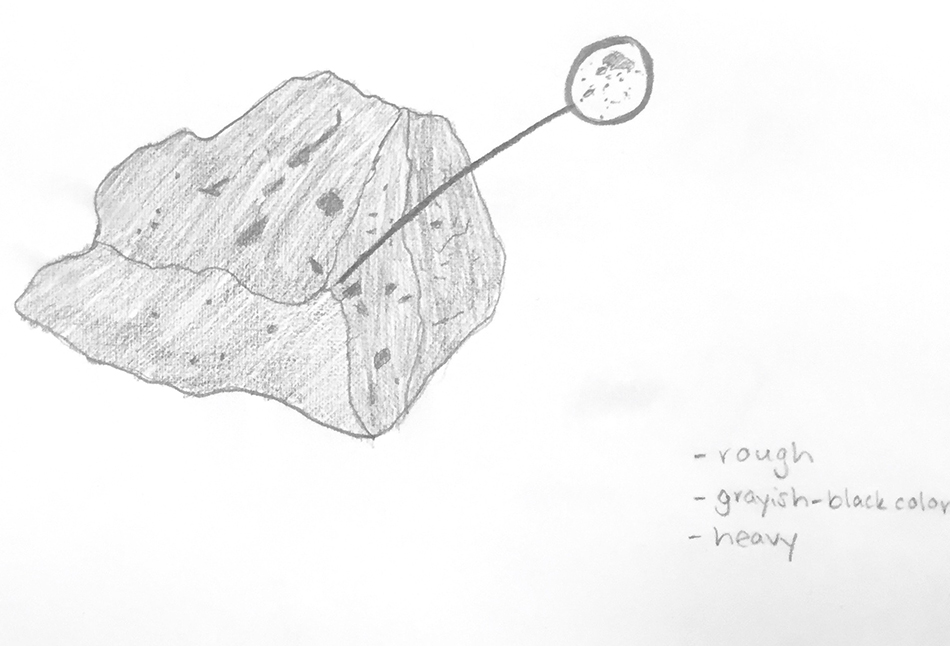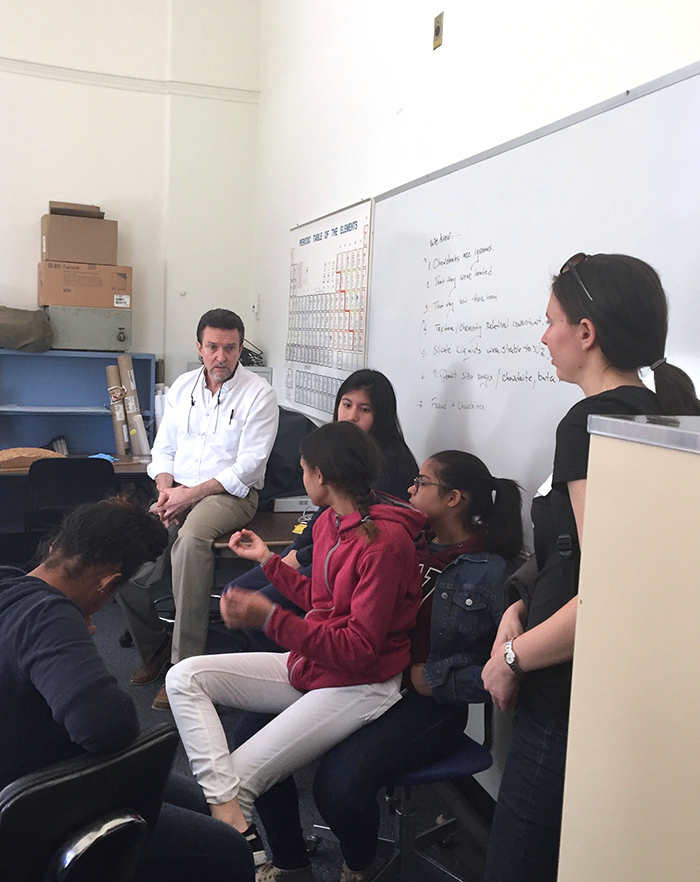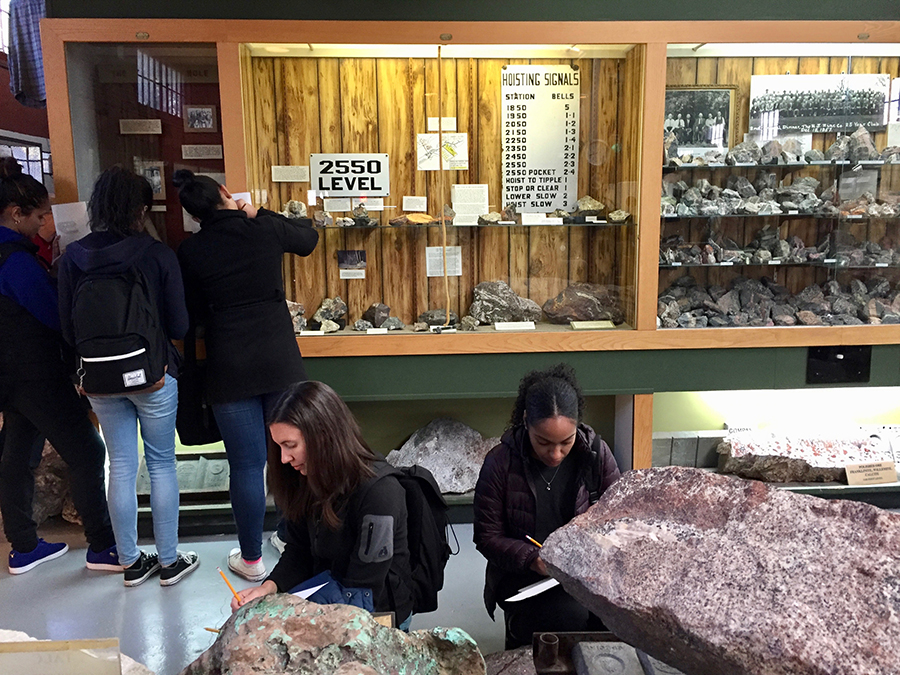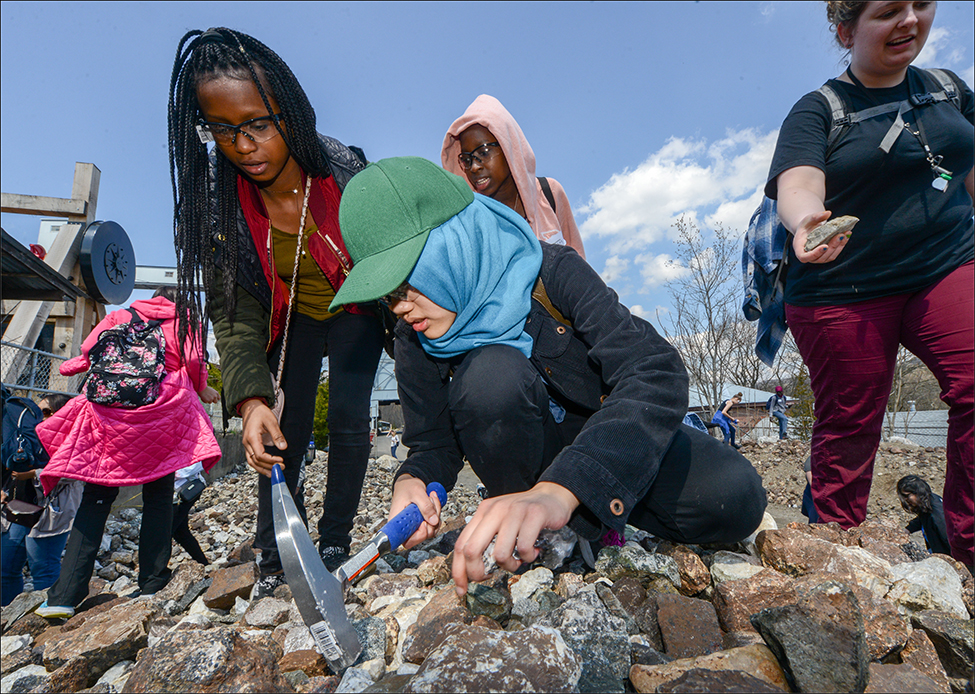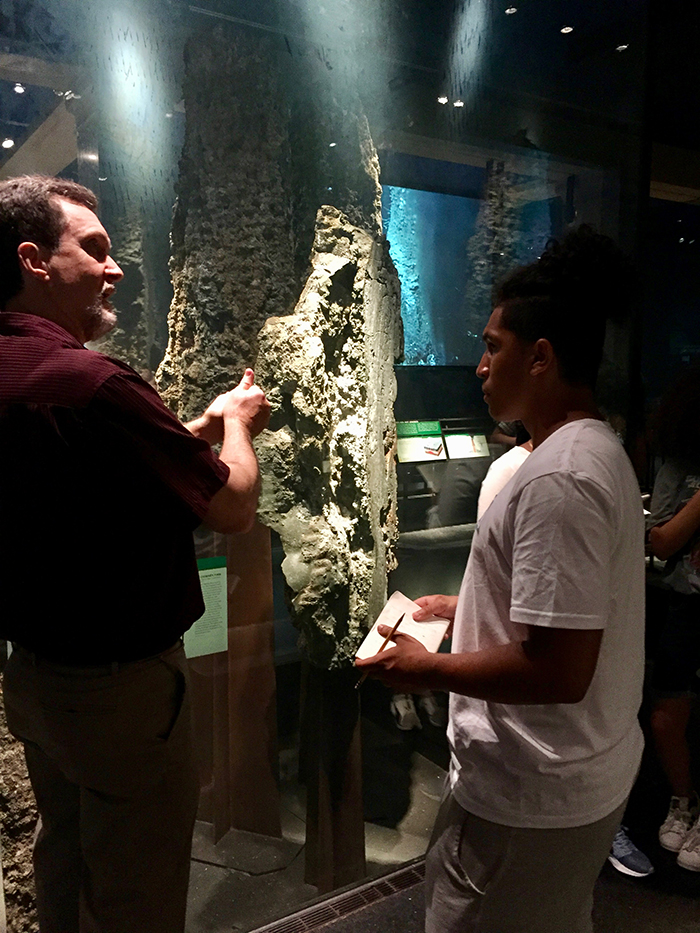Feature
Mining Science Capital
Collaboration With a Scientist Enhances Out-of-School Education for New Teachers and Their Students
Connected Science Learning April-June 2019 (Volume 1, Issue 10)
By Cristina Trowbridge
“It was a perfect day. I was impressed with the students’ curiosity, questions, and seriousness about volcanic rocks and how engaged and focused they were for the entire day,” said American Museum of Natural History (AMNH) scientist and curator Jim Webster after working with a group of 44 middle and high school students and 11 science teachers from 10 different New York City public schools, all of whom participated in an event called Advances in Geosciences.
Advances in Geosciences brings together recent graduates of the AMNH Master of Arts in Teaching (MAT) program, some of their students, and a working AMNH scientist to visit museum exhibit halls, collect rocks at an underground zinc mine (Figure 1), and tour a scientist’s lab (Figure 2). This one-day program is full of experiences that could not occur inside a classroom. Students gather in the scientist’s lab for a firsthand view of mechanical equipment that melts rocks through a process that replicates the natural development of igneous rocks. In the museum, teachers and students sketch and describe large volcanic rock samples. In the field, teachers eagerly introduce their students to teachers and students from other schools as they examine and collect rocks. Deep in the zinc mine, an audible gasp rises from the group when mine staff switch on the lights that cause walls of underground minerals to fluoresce in a rainbow of colors.
Launched in 2012, the 15-month AMNH MAT program began as a pilot initiative to help address a critical shortage of qualified Earth science teachers in New York State, particularly in high-needs schools. In 2015 the MAT program officially joined the Museum’s New York State–accredited Richard Gilder Graduate School. MAT is the first urban teaching residency to be offered by a museum, and courses are taught by museum scientists and education faculty. Program participants complete classroom residencies at high-need schools, as well as two museum residencies—one in a summer youth science program and the other in a science practicum. Graduates receive a Masters of Arts in Teaching degree, with a specialization in Earth science for grades 7–12. After graduation, teachers participate in the museum’s teacher induction program, which extends relationships between the MAT program and its graduates beyond course work and into the first two years of professional employment. The museum’s induction program provides monthly cohort meetings, teaching and learning activities, and classroom mentoring and coaching.
This article describes the Advances in Geosciences program, part of AMNH’s teacher induction, which facilitates learning experiences among new science teachers, their students, and practicing scientists. Advances in Geosciences features non–school day events that support new science teachers outside of school as they deepen students’ understanding of the work of scientists, build on Earth science content, and engage with students from other New York City schools (Figure 3). An equally important goal is to build on first- and second-year MAT teachers’ knowledge of AMNH, camaraderie with the cohort, and familiarity with the scientist, all of which allow the teachers to facilitate learning from a place of strength.
This article includes varied perspectives from students, teachers, and a MAT faculty scientist who participated in Advances in Geosciences, and suggests the value of integrating informal and formal learning environments to enhance reciprocal development for new teachers and their students (Avraamidou and Roth 2016). Although the program is specific to AMNH and MAT graduates in New York City, there are implications for informal science educators to forge relationships with teacher induction initiatives affiliated with school districts and universities to support new science teachers and their students in a critical period—the first years.
When looking outside of school for support, teacher education departments have shown growing interest in the potential role of museums and other informal science education institutions (ISEIs) in preservice teacher development. Some teacher education programs use ISEIs’ resources in their course work, supporting preservice teachers’ expansion of their own content knowledge and their development of hands-on field trip experiences—activities that strengthen student engagement (Aquino, Kelly, and Bayne 2010). Teachers’ early exposure to informal science education institutions broadens their perception of instruction and the instructional support available for the classroom (Kisiel 2014). In addition to student engagement, museum affordances such as exhibits, people, and objects play a role in this critical phase of early teacher identity development (Avraamidou 2014; Adams and Gupta 2017). Informal science education environments and staff are well-positioned to provide support by building on preservice teacher education programs as new science teachers transition into the classroom.
New teacher induction
New teacher induction programs typically focus on instructional coaching and analysis of student work to guide teacher development, with the ultimate goal of accelerating student outcomes in the first years of teaching (Goldrick et al. 2012). Over the past 25 years, there has been an increase of induction programs (Ingersoll and Strong 2011), with 29 states requiring at least one type of professional development for new teachers (Goldrick 2016). Drawing on various beginning teacher survey data, Ronfeldt and McQueen (2017) suggest that participation in induction initiatives predict a decreased likelihood of attrition. The first few years of teaching are a critical window for informal science institutions to forge relationships with new teacher induction initiatives affiliated with school districts and universities.
For new teachers, building classroom rapport and student engagement are still some of the most challenging aspects of the profession (Feiman-Nemser 2012). To address this challenge, one approach within the museum’s new teacher induction program is to build on MAT graduates’ capacity to use the museum with their students. Out-of-school environments can be used as a vehicle to shift students’ thinking about themselves and science learning, as well teachers’ sense of themselves and their students (Kisiel 2014; Avraamidou 2014).
How did we start Advances in Geosciences?
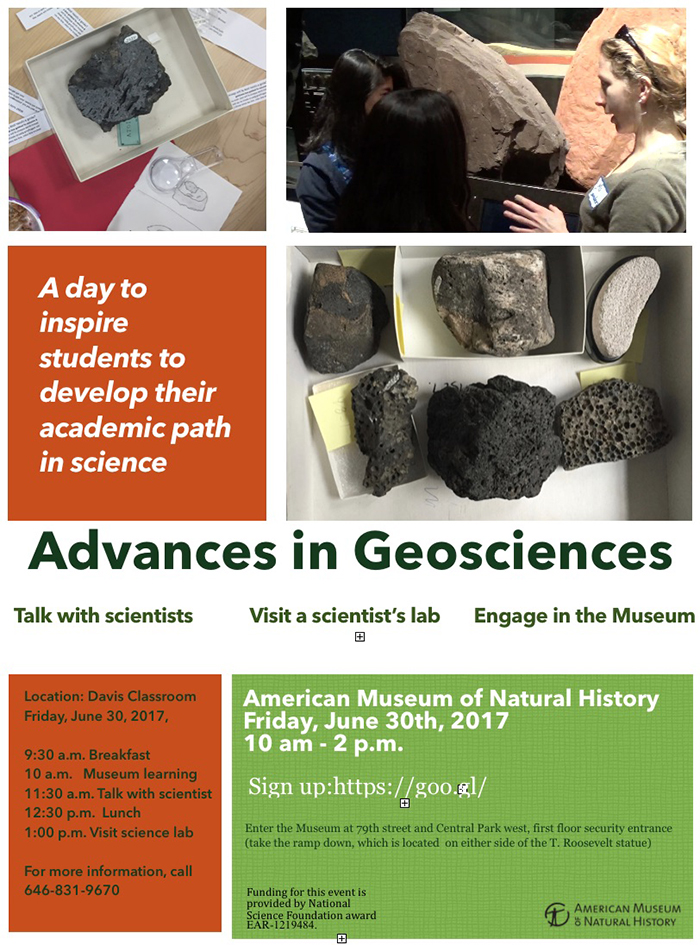
In the third year of the museum’s new teacher induction program, scientist, MAT faculty member, and Earth and planetary sciences curator Jim Webster received funding for broader impacts and educational outreach as part of a National Science Foundation (NSF) award. These funds were used to support MAT teachers and their students with a program offering an in-depth examination of how scientists study the Earth. The NSF award covered transportation for teachers and students to the Sterling Hill Mining Museum in Ogdensburg, New Jersey; notebooks for students; rock samples for teachers’ classrooms; and breakfast and lunch at AMNH. The museum’s new teacher induction budget provided stipends for teachers.
The planning of Advances in Geosciences has been a collaborative effort, with MAT induction faculty (science educators who are MAT faculty) working with Webster and with MAT participants. Teachers were adamant that students go behind the scenes of a scientist’s lab, engage in an informal conversation with the scientist, and spend time in the Gottesman Hall of Planet Earth while at the museum. In addition, the teachers had visited Sterling Hill with Webster as part of their summer practicum and felt that it was important to provide a similar educational experience for their students.
While preparing for the first Advances in Geosciences day, Webster, teachers, and MAT induction faculty were excited and apprehensive for different reasons. MAT induction faculty were concerned about attracting a sufficient number of MAT graduates and their students. From their experience working with new teachers, faculty knew that teachers frequently felt tired and might be hesitant to make any teaching commitments beyond their school days, especially the extra burden of coming in on the weekend with some of their students. Webster presented his own concerns as a research scientist; he had limited experience teaching large groups of teenagers who did not know each other, and he was not sure how it would all work. To alleviate concerns, induction staff worked with MAT teachers and Webster to plan the day. During monthly new teacher induction meetings, teachers gave input and shared ideas of how to organize the day so that it would include a variety of immersive activities to review and extend learning about rocks and minerals. Teachers also planned time to share some of their favorite Earth science exhibits with students.
Because teachers were asked to bring three to five students, teachers were worried about how they would recruit. Teachers shared strategies with each other and, in the end, some teachers brought students who were struggling in class and were disengaged, other teachers asked students to write short statements on why they wanted to participate, and still others chose students who were particularly interested in Earth science.
The event was called Advances in Geosciences to symbolize that this was a day of high expectations that would build on Earth science classroom instruction and give an inside view of the work of scientists. Working with the teachers and the scientist, the agenda and student learning goals were outlined. The primary goal of the day was to inspire students to develop their academic path in science by providing an immersive experience that expanded on the Earth science curriculum. Content learning goals aligned with the New York State Earth science curriculum were identified: how rocks and minerals support understanding of Earth’s history, and how minerals and rocks are formed as a result of specific environmental conditions. Different pedagogical strategies were used to foster students’ use of the museum to deepen their understanding of rocks and expose them to scientists’ use of rocks to study the Earth. For example, an initial activity used silent sketching of rock specimens to elicit student ideas about igneous rocks (Figure 4). Teachers designed prompts for small-group discussion and facilitated exchanges among students from different schools. In addition, teachers were asked to have students share what they learned back in the classroom. Some teachers had students document the day with photos and make short PowerPoint presentations, whereas other students wrote about the experience.
To understand what resonated for students, MAT induction staff, with support from the teachers, developed a feedback form that asked students to reflect on what they learned. The form also included a few multiple-choice and short-answer questions from the Earth science Regents exam, which is a New York State standardized science exam that most of the students would be expected to take at the end of the school year (Figures 5 and 6). Among Regents questions, the most relevant ones are about characteristics of intrusive igneous rocks (mafic and felsic); processes that form these types of rocks; the sequencing of events that caused particular rock formations, from the oldest to youngest; and interpretation of bedrock maps. The addition of the Regents questions reinforces for new teachers how out-of-school learning can support students’ school learning. Below are two examples.
What did the day look like at the museum?
The day started before the museum opened in the Gottesman Hall of Planet Earth with an investigation on volcanic rocks. In different areas of the exhibit, teachers and the scientist both facilitated student discussion about why there are ocean basins, continents, and mountains. This was followed by a sketching activity in which students observed large volcanic rock specimens (Figures 7, 8, and 9). These activities helped students from different schools engage with the topic and the museum, and get familiar with each other. The silent sketching activity generated student observations and inferences, and elicited their ideas about igneous rocks.
Webster answered students’ questions about the rock specimens and gave a conversational talk about his research on igneous rocks. After lunch, students and teachers were placed in three groups that rotated through Webster’s lab and different museum halls, where teachers shared some of their favorite exhibits and students sketched rock specimens. In his lab, Webster uses controlled conditions to simulate the process of igneous rock formation. He asked students to call him “Jim” to emphasize the program’s informal approach, which was designed to encourage questions and discussion from students and provide a point of connection to the scientist in what was otherwise a potentially intimidating environment. The point of connection for first-year teacher Kin Tsoi’s high school students was being in the environment:
"The most important part about showing students the lab is that it took them out of the mindset that education only happens in the classroom. It helped them think that education is more life-long. A lot of them did not have any idea about why we did anything in class. They couldn’t understand why we looked at things like geography, geology, astronomy, weather.”
The context of the museum and the scientist’s lab, and having time to talk with a working scientist, made the content relevant for students (Figure 10).
For a majority of students, it was their first time meeting a scientist and visiting a science lab. Danny (we use only first names for student confidentiality), a tenth grader, commented, “I actually went to a real scientist’s lab for the first time of my life.” The time in the lab resonated with students, as exemplified by an eighth grader’s reflection:
"My favorite part was going to the lab and seeing how geologists perform experiments on rocks and learning about Jim’s lab and looking at the instruments he uses and how he uses them.”
Webster thought the lab experience resonated with the students because of he was able to show his “enthusiasm for the lab work.” He continued:
"I love being in my lab. I think sharing the melting rock samples and weaving a story, and to be in a room full of equipment. It is not a whole bunch of computer screens and lights and electronics. It is values and gauges. It is a little more mechanical and I wonder if that is a little easier to appreciate.”
One student, Jolene, an eighth grader, commented on how the lab visit shifted her thinking about the work of scientists:
"What left an impression on me was the lab, where scientists use different tools to help analyze different rocks, minerals, and etc. I remember when we went into the lab … we saw all of the equipment that they used and they described what each one were used for. The day shifted my thinking because there were so many experts that knew so many things and personally I’m not into geology and I’m more into astronomy but despite my interests, the whole trip really grabbed my undivided attention.”
What did the day look like at the mine?
The Sterling Hill Mining Museum is less than 50 miles from New York City. Mining in this location for zinc, iron, and manganese began in the late 1730s. The mine closed in 1986, and several years later opened as an educational museum. According to Webster, the sulfur-poor zinc ore minerals of the Sterling Hill Mine and the nearby Franklin Mine form a mineralogical enigma; nothing else quite like it exists on Earth. These two mines combined have 350 different types of minerals—representing 10% of minerals known to science (Bostwick 2008)—91 of which fluoresce.
In the MAT program, Sterling Hill Mining Museum holds a special place because it is part of the MAT summer science practicum and a favorite for many participants because they see rocks fluoresce in the mine and get to use hammers to collect rocks for their future classrooms. Each year, on the bus back to the museum, the MAT graduates strategize how they might bring their future students to Sterling Hill. The teachers know these types of learning experiences can make a difference in building an interest in science. In other words, the day resonates with participants—both as learners and preservice teachers—sparking their desire to incorporate this experience into their teaching. For students, learning in the context of the mine and the adjacent museum solidifies many classroom rock and mineral concepts.
The Advances in Geosciences day at Sterling Hill Mining Museum included a tour of an underground zinc mine and museum (Figure 11) and the opportunity to collect rock specimens in the field side by side with teachers and Webster (Figures 12 and 13).
Planning the trip to Sterling Hill Mining Museum when most teachers were teaching their rocks and minerals unit allowed educators to complement the experience back in the classroom. Students took photos during the trip and led class presentations that included using ultraviolet lights, which the MAT induction program bought for the teachers, to show the bright green and red colors of fluorescent zinc exposed in the minerals. Principal Yvette Rivera commented that for her students, “The day was a wonderful mesh of both science and education and that also captured the real-life experience of how geology has a real-life impact.”
Teacher and student feedback
Teachers and students shared their reactions to Advances in Geosciences through feedback form data, post-trip emails, and follow-up small-group conversations that took place at schools over a two-month period following the visit to the mine. A few themes emerged that highlight the reciprocal learning that occurs during these days for new teachers and their students: enhanced classroom rapport, connections between science knowledge and professions, and changes in students’ perception of rocks.
The experiences in the lab and talking with Webster were of high interest to students, and this was evident in the responses on the feedback forms.
Enhanced classroom rapport
For teachers and students, the shared experience helps both learn from each other, and build and solidify classroom rapport. After participating in Advances in Geosciences, first-year teacher Kin Tsoi commented:
"I chose the trip to reengage students in the content that we were working on and to build up a relationship with these students. This worked pretty well. They were more willing to come to afterschool for help, although the results varied at times.”
For new teachers, getting to know students and building rapport is a critical first step in the first years of teaching. This is one reason why getting out of the classroom can support new teacher development. Second-year teacher Erin Richley, who has participated in all three offerings of Advances in Geosciences, highlights the reciprocal development for building relationships at school:
"I think the biggest thing I got out of that first Geoscience day was how it made such an impact on Manu [a student] and my relationship. I think it meant a lot to her that I wanted to show her part of my world, and following that experience and into the next year teaching her again, we had a more trusting relationship.”
These comments highlight the value in getting to know students in an expanded capacity, and its potential role in supporting teachers in building their classroom community.
Students’ comments reflect that they also valued the opportunity to see their teachers outside the classroom and to learn along with them. For example, Fateah, an eighth grader, summarized her impression about her teacher: “My teacher, Mr. G. is obsessed with rocks. It was a nice new thing to learn about my teacher.” Michael, an 11th-grade student, shares what he learned about his teacher, Caity Tully, and what he thinks she learned about him:
"I mentioned to Caity prior to the trip that I have already taken Earth science in middle school and in a sense boasting that I had a 93 on the Regents. Acknowledging this information, she thought that I would be more knowledgeable about geology and I failed her by not really knowing the answer to her questions. She was fine with all of that. I had questions along the trip and she would always try to give me an answer or she would ask Maya, another teacher, if she didn’t know the answer. I admire her for that; her attempt to give me the solution, knowing that she doesn’t know it, yet still strives to figure it out is a rare quality to have.”
Michael describes how his teacher is accepting of him even if he is not able to apply what he has learned in previous Earth science classes to the rocks and minerals in the mine. At the same time, he sees his teacher not knowing the answer and how she consults with a fellow teacher for the answer. This is a parallel process of both of them showing their vulnerability of not knowing, and that not knowing is okay.
Connections between science knowledge and professions
Advances in Geosciences days offered students the opportunity to see professional science in action. For example, one ninth-grade student noted: “I liked seeing Jim’s lab, it was interesting to see how a scientist works pretty much on a daily basis.” At Sterling Hill Mine, Miranda, a 10th grader, made a connection between the science, the rocks, the mining profession, and her new awareness of rocks. Miranda states,
"I always thought that I wanted to become a doctor, because I love math and science. However, this trip made me wants to become … [a scientist] … about rocks. I never knew I would be so interested in learning about rocks. I also enjoyed learning about mining. For example, the canary bird fascinated me. I thought it was a smart idea to use the birds to see if there was enough oxygen. I never looked down at rocks and identify them. But after the trip, I constantly look at rocks.”
These students expanded their ideas about science careers and awareness that science could lead to a career that they would find interesting (Archer 2015).
Opportunities such as Advances in Geosciences also allow the MAT graduates to share their expertise with their students. As a result, students indicated that they saw their teachers as scientists in the field. For example, when asked how he liked interacting with a scientist, Michael, the 11th-grade student, said: “Technically the teachers are scientists so yes, I did interact with scientists.” Both teachers’ sense of identity and students’ interpretations of their teachers’ identity shifted toward “scientist” on these days. Second-year teacher Erin Richley said:
"It made me feel like I can still be a part of the larger scientific community. It helped me solidify the idea that I can help expose my students to what made me love geology, and still teach them something at the same time. It also helped to remind me I still had a place at the museum, and that I should bring my students back to see it from a more insider perspective.”
Advances in Geosciences days highlight the value the teachers place on being affiliated with a science community and the museum.
Changes in students’ perception of rocks
The trips afforded new teachers contextualized opportunities to teach about the dynamic properties of rocks. Before the trip to the mine, some students were dismissive of rocks as boring; however, after the trip, students’ comments revealed a new relationship to these rocks. Genesis, a 10th-grade student, reflected on how the trip inspired a new awareness of rocks in her neighborhood:
"I really enjoyed the experience of going into an actual mine that was once functional. … I learned that there are minerals that glow in the dark. There are minerals that come in different shapes, sizes, and colors. I learned as a person I would really enjoy doing this as a profession. I was like to look for actual rocks … That very weekend I went to the park …”
We tend to assume change happens only when we encounter living beings, but nonliving things can also change us and provide awareness, and this is a more holistic approach to being in the world (Bai 2015). Another student captured this, saying:
"I enjoyed being able to pick our own samples of the minerals. First as a group but then individually with the rock hammer. I enjoyed this because I had never picked rocks before and it was really cool to see the minerals that made up the rocks.”
Students were surprised by how engaged they got with the rocks at the mine and the museum. Through this experience, students had an interactive and authentic experience, not only with their teachers and other students, but also with the rocks as scientific specimens.
Improvement and implications
To date, MAT induction faculty have hosted three Advances in Geosciences days and plan on two events this year. Areas of potential improvement for Advances in Geosciences include developing standardized preparation activities for the day and extended learning opportunities back into the classroom that align with middle and high school curricula. MAT induction faculty would like to develop a plan to expand the evaluation efforts to understand the influence of the program as the new teachers continue in their teaching careers and students move through their academic/career pathways. In addition, teachers and MAT induction faculty will develop a teacher survey and expand the student survey to measure outcomes to inform how to build on these days both in and out of the classroom. Webster recently submitted a proposal for additional funding from NSF for broader impacts in education to continue this component of work in MAT new teacher induction. The program has the potential to be replicated by other scientists and informal science institutions collaborating with induction programs in their own communities.
Acknowledgments
A special thanks to MAT teachers Dejan Božović, Kevin Gostomski, Erin Richley, Jessica Sharoff, Kin Tsoi, and Caity Tully and their students, who contributed to this article. A special thanks to Bernadette Doykos and Jamie Wallace for their comments. Support for Advances in Geosciences is provided by National Science Foundation award EAR-1219484.
Cristina Trowbridge (ctrowbridge@amnh.org) is senior manager of professional development at the American Museum of Natural History in New York, New York.
Disabilities Inclusion Preservice Science Education Informal Education



